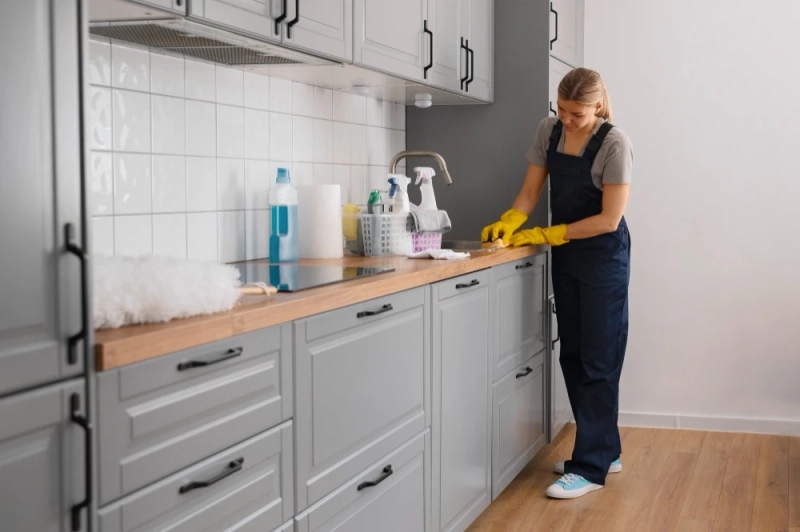Refacing cabinets is a popular and cost-effective way to give your kitchen a fresh and updated look without the expense and hassle of a full cabinet replacement. However, to ensure the longevity and beauty of your refaced cabinets, proper maintenance and cleaning are essential.
In this article, we will explore the best practices for maintaining and cleaning refaced cabinets, helping you preserve their appearance and functionality for years to come.
Understanding Cabinet Refacing
Before delving into maintaining and cleaning refaced cabinets tips, it's crucial to understand what cabinet refacing entails. Cabinet refacing involves replacing the cabinet doors and drawer fronts while keeping the existing cabinet boxes intact. This process allows homeowners to update the style and color of their cabinets without the need for a complete overhaul. Proper maintenance and cleaning are essential to ensure the longevity and aesthetic appeal of refaced cabinets.
Maintenance Tips for Refaced Cabinets
1. Regular Dusting
Dust can accumulate on cabinet surfaces over time, dulling the finish and diminishing the overall appearance. To prevent this, make it a habit to dust your refaced cabinets regularly. Use a soft, lint-free cloth or a microfiber duster to gently wipe away dust and debris. Avoid abrasive materials that could scratch or damage the cabinet surface.
2. Gentle Cleaning Solutions
When it comes to cleaning refaced cabinets, opt for mild and non-abrasive cleaning solutions. A mixture of water and mild dish soap is generally sufficient for removing everyday grime. Avoid using harsh chemicals or abrasive cleaners, as they can damage the finish and compromise the integrity of the refacing materials.
3. Avoid Excess Moisture
Excessive moisture can be detrimental to refaced cabinets, causing warping or bubbling of the materials. When cleaning, make sure to wring out your cleaning cloth thoroughly and wipe down surfaces without allowing water to pool. Additionally, avoid using steam cleaners, as the high heat and moisture can be harmful to the cabinet finish.
4. Protective Coatings
Consider applying a protective coating or wax to your refaced cabinets after installation. This extra layer adds an additional barrier against stains and moisture, making it easier to clean and maintain the cabinets over time. Always follow the manufacturer's recommendations when choosing and applying protective coatings.
5. Handle with Care
While refaced cabinets are designed to be durable, it's essential to handle them with care. Be mindful of sharp objects that could potentially scratch or dent the cabinet surfaces. Use caution when opening and closing cabinet doors and drawers to avoid unnecessary wear and tear.
6. Inspect and Repair
Regularly inspect your refaced cabinets for any signs of damage or wear. Addressing issues promptly can prevent further deterioration and prolong the lifespan of your cabinets. If you notice any loose edges, peeling, or damage, consult with a professional refacing service to address the problem.
Cleaning Specific Cabinet Materials
1. Wood Cabinets
For refaced cabinets with wood surfaces, it's crucial to use wood-specific cleaners. These cleaners are designed to nourish and protect the wood while removing dirt and grime. Always follow the manufacturer's recommendations for cleaning and maintaining the specific type of wood used in your cabinets.
2. Laminate Cabinets
Laminate cabinets are known for their durability and resistance to stains. To clean laminate surfaces, a mixture of water and mild detergent is usually sufficient. Avoid abrasive pads or scrub brushes that can scratch the surface. If needed, use a soft cloth or sponge to gently clean away any stubborn spots.
Conclusion
Maintaining and cleaning refaced cabinets is a straightforward process that, when done regularly and correctly, can significantly extend the life and beauty of your kitchen cabinets. By incorporating these best practices into your routine, you'll not only preserve the aesthetics of your refaced cabinets but also ensure they remain a functional and stylish focal point in your home for years to come. Remember to follow the manufacturer's guidelines and consult with professionals if you encounter any specific issues with your refaced cabinets.


